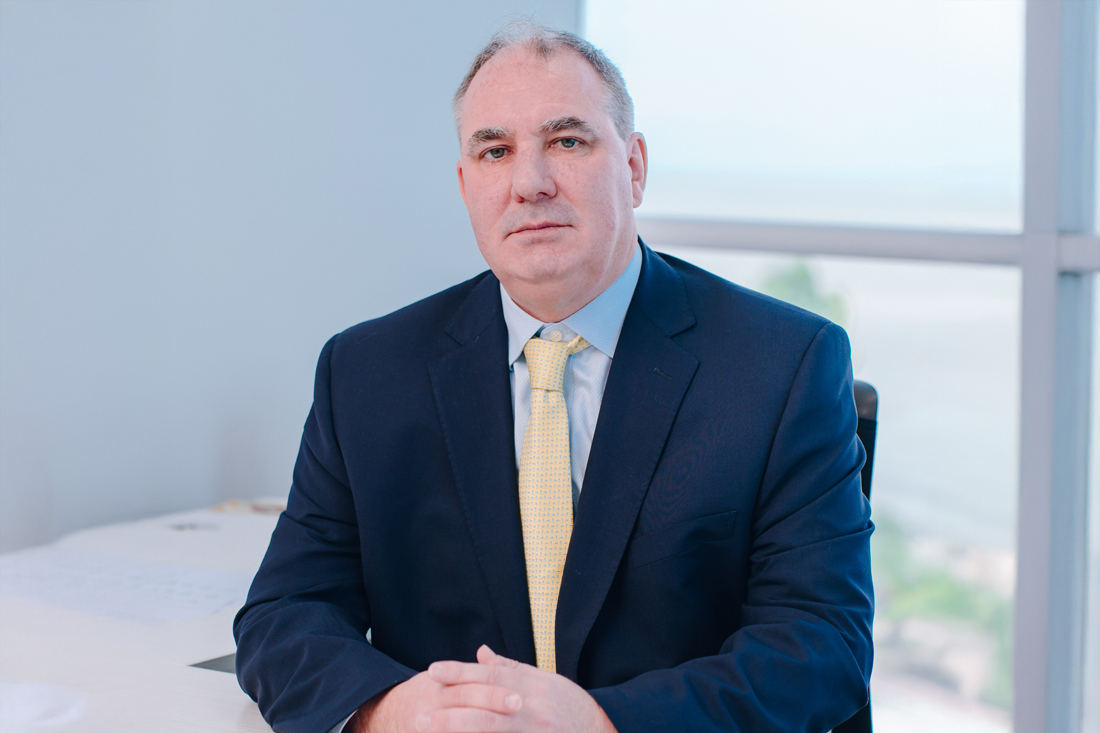
30 Jun Interview with Damian Blackburn, CEO, ONE Communications, Guyana
What main factors have allowed for the rapid advancement of Guyana’s telecommunications sector in the last five years and why does it stand out in the region as a leader in telecom advancement?
The telecom sector is rapidly evolving alongside Guyana’s booming economy. Since the 2020 election, the government has prioritized ICT development, focusing on expanding mobile networks and delivering fiber-to-the-premises as quickly as possible, just like in more advanced markets. ONE Communications has led the way in fiber rollout. Today, around two-thirds of premises in Guyana have access to high-speed fiber, making us the country’s premium provider. That level of penetration compares well globally and we are continuing to expand.
The mobile sector has also seen a major transformation. High-speed LTE is widely available and one network has begun limited 5G deployment. There are three mobile operators: ONE, Digicel and e-net, plus several smaller ISPs, ensuring strong competition across both mobile and residential services. While there are still connectivity gaps in the hinterland, satellite solutions, including the recently licensed Starlink, are expected to bridge those.
We rebranded from Guyana Telephone and Telegraph (GTT) to ONE Communications in September. This aligns us with our regional high-speed network operations, all built on fiber and LTE. We are leading the fiber rollout in Guyana, now passing over 160,000 premises — more than double our footprint since 2020. Our goal is full coverage wherever it makes economic sense. We have also partnered with WANSAT, a satellite company founded by a returning member of the Guyanese diaspora. That partnership has rapidly expanded connectivity to businesses and communities outside our fiber footprint. On the mobile side, our LTE network covers most of the population. Since upgrades in 2022 and the arrival of a third mobile operator in 2023, there has been a surge in mobile data use. We are now in the midst of a mobile internet revolution, similar to trends seen globally.
We are the ICT engine behind most businesses in Guyana. Through our Brava brand, which operates regionally, we offer integrated solutions that combine high-speed connectivity with cybersecurity and cloud services. Brava has been central to the oil and gas sector, where reliable, resilient connectivity, both within Guyana and internationally, is essential. We are proud to support that growth. Beyond oil and gas, we have seen a surge in small businesses over the past few years, driven by economic expansion. Brava supports this growth by bundling fiber, mobile, cybersecurity and cloud services into easy-to-use solutions tailored for businesses of all sizes. Connectivity is at the heart of it all.
What flagship infrastructure projects are currently underway to advance Guyana’s telecom sector in 2025 and beyond, such as ONE’s plans to cover 75 percent of premises with fibre by the end of 2025 and introducing satellite services alongside WANSAT?
By the end of this year, we will reach around 75 percent of premises with fiber, replacing our old copper network. The full rollout will continue through 2025–2026, covering all areas where fiber is economically viable. Our satellite partnership with WANSAT, now over a year old, has expanded access—especially for enterprise clients and community Wi-Fi in the hinterland. On the mobile side, we are part of the shift toward affordable data plans in a largely prepaid market. For business customers, Brava offers tailored solutions, including postpaid and roaming plans. As more Guyanese travel regionally and abroad, we have introduced value-packed roaming options — like using your local plan across U.S. networks.
What key innovations and groundbreaking services has ONE Communications recently introduced to the market that have revolutionized the playing field, such as its Mobile Money Guyana service?
Innovation for us starts with expanding our fiber and mobile networks, but it goes far beyond basic connectivity. Through Brava, we offer bundled business solutions — cybersecurity services like penetration testing, virtual CISOs, cloud backup and more — designed to meet today’s business needs. We have also partnered with Hubcap to deliver mission-critical devices like body cameras and radio-style tools that operate over mobile networks. Our recent partnership with Cloud Carib, a data center specialist, further strengthens our offering in enterprise infrastructure. Our mobile money service, MMG, has grown alongside Guyana’s economy over the past decade. It’s now the country’s leading bill payment platform, trusted by over 200,000 monthly users. MMG functions like Kenya’s M-PESA, allowing users to pay bills, top up mobile credit — including from all three major providers — and transfer money. It supports payments to over 100 service providers and has truly transformed how people manage everyday transactions.
ONE Communications has steadily grown its international footprint, with operations in the Cayman Islands, U.S. Virgin Islands and Bermuda. What plans does the company have to expand its services in its regional markets? Is the company considering expansion into new markets?
We proudly serve over 140,000 residential customers, 350,000 mobile users across four markets and more than 15,000 businesses through Brava. We have rolled out the Brava and ONE Communications brands across nearly all markets — just one remains. With a strong foundation in place, we are ready to expand as new opportunities emerge across the region.
The ONE Guyana Digital program aims to train 2,000 Guyanese — including marginalized groups — as full-stack developers to bridge the talent gap and boost employability in ICT. What is your assessment of the local talent pool in Guyana’s telecommunications sector in 2025?
We have operated in Guyana for over 30 years, building a strong team of local talent. More than 95 percent of our fiber rollout was done by Guyanese engineers and contractors — testament to our commitment to upskilling. We have trained our entire field team in modern fiber technology and continue investing in customer service, digital marketing and next-gen skills. Guyana is also home to our regional customer excellence center, reflecting our pride in the capabilities we have developed here.
What steps has Guyana taken to introduce policies and regulatory frameworks to support new innovations such as digital trade, AI integration and cybersecurity? What more needs to be done going forward to harmonize these policies on a regional basis?
The government of Guyana is rapidly advancing its digital transformation, sometimes at lightning speed. Innovations like digital gates at the airport are just the beginning. Our partnership with WANSAT ensures that this progress is inclusive for all Guyanese. Through MMG, we are enabling payment solutions for government services, like speeding fines and benefit distributions. We also support telemedicine and cybersecurity, providing expertise to ensure these services remain secure. We are committed to supporting the ongoing digital evolution in Guyana.
ONE Communications also maintains close ties with U.S.-based entities through its parent company, ATN International. How significant has U.S. participation been in building up Guyana’s telecommunications industry?
One Communications is part of ATN International, a NASDAQ-listed company and has been investing in Guyana for over 30 years. Before the oil and gas boom, we were one of the largest U.S. investors in the country. With increasing global interest, including delegations from the U.S., we remain an active participant in various chambers of commerce, such as the American, British and Oil and Gas Chambers. As a major investor, we share our experience and support new businesses by providing essential connectivity to help them hit the ground running. We strive to keep pace with the rapid growth and support both international and local businesses.



Sorry, the comment form is closed at this time.